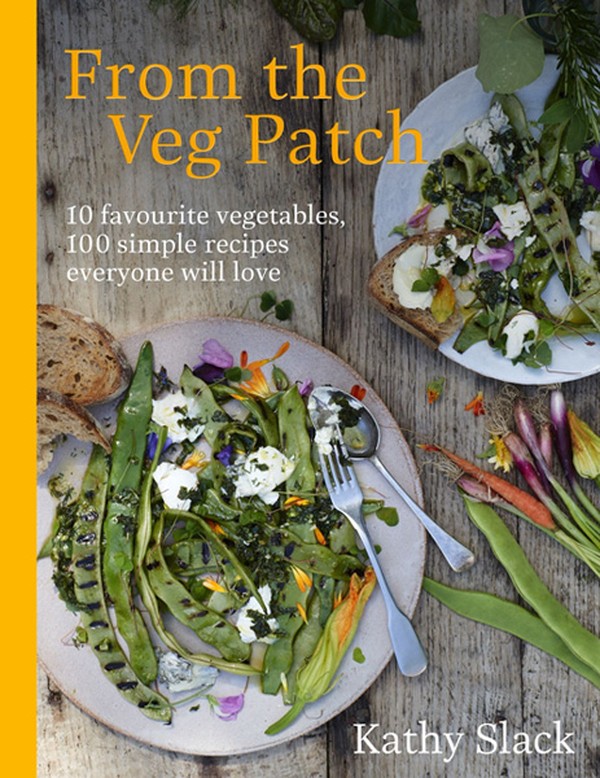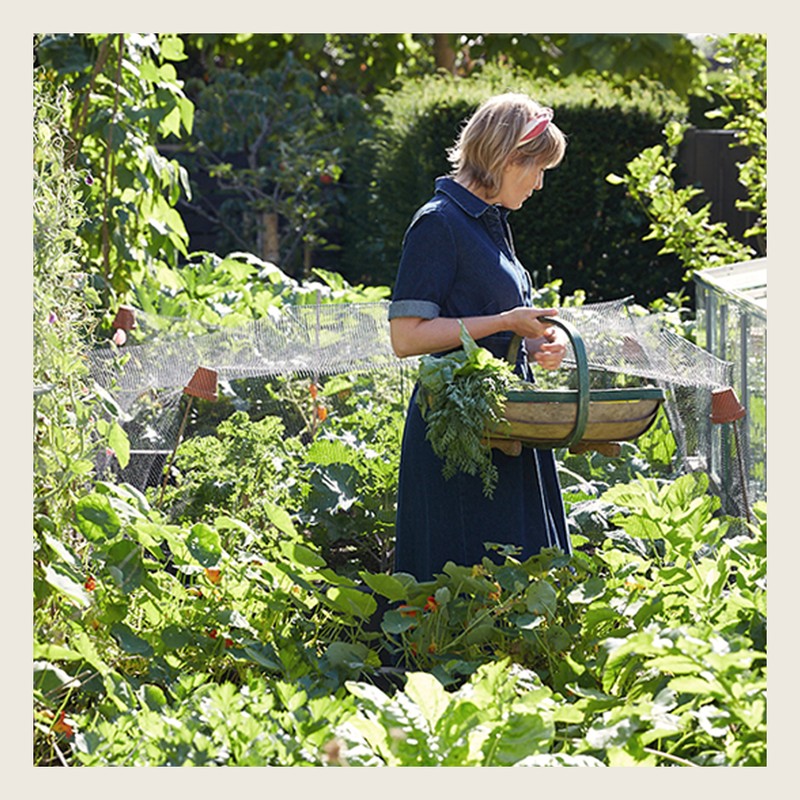
How To Make The Most Of Summer Vegetables
If there’s one thing I love in life, I mean really passionately adore, it’s vegetables. Sure, I love my dog and my parents and all the normal stuff too. But what stirs in me genuine awe-filled wonder, what I worship with all the zeal of a fanatic, are plants.
Vegetables, when you stop to think about it, are extraordinary. Take a tomato. (Yes, technically a fruit, but who’s counting?) In a matter of weeks, it transforms from a tiny, apparently lifeless, seed into a hulking great triffid, breaking the glass of the greenhouse to escape, and festooned with vibrant jewels enough to keep a household in passata, salad, tarts, soups and stews for the next year. Such flavour, such versatility, such potential for delicious meals from one unassuming, beige seed. Only soil, water and sun have transformed it. This is magic – proper alchemy – and I marvel at it every time I grow something.
My veg obsession began when I started growing my own food. I had been working in London advertising agencies for over a decade. We’d moved to the Cotswolds in the hope of finding some escape from the rat race. But all that did was add a four-hour commute to my already jam-packed, plugged-in, horse-trading, Blackberry-addicted day. Eventually, and so predictably, burnout and depression took hold. So I quit, with no idea of what to do next.
Jobless and dysfunctional, I found solace in the garden. It was pretty neglected, so I was pulling up weeds and scattering a few old vegetable seeds (bought when we had first moved and I had visions of becoming Barbara Good) on a bare patch of soil. Despite my haphazard care and wandering attention, the seeds grew and we ate our first homegrown meal. Sure, it was only lettuce and radishes, but it felt like I had conjured them out of thin air. I was hooked. The harvests that first year, and my burgeoning obsession with cooking them, would be my therapy, reconnecting me with the world, giving me hope and, ultimately, a new career. So, without sounding too glib about it, part of the reason I love vegetables so much is because they have been my saviours.
Every recipe below puts a hero vegetable or fruit centre stage and builds a dish around it. I want to give each harvest its moment in the spotlight, parading it in a flurry of trumpets to the dinner table. This is a chance to revel in the splendour of each vegetable or fruit in turn, to really appreciate its flavours, textures and utter brilliance. And it’s a chance to see what wonderful things happen when you make that hero plant the main flavour in the dish.
Inspired? Here are three of Kathy’s recipes to try at home…
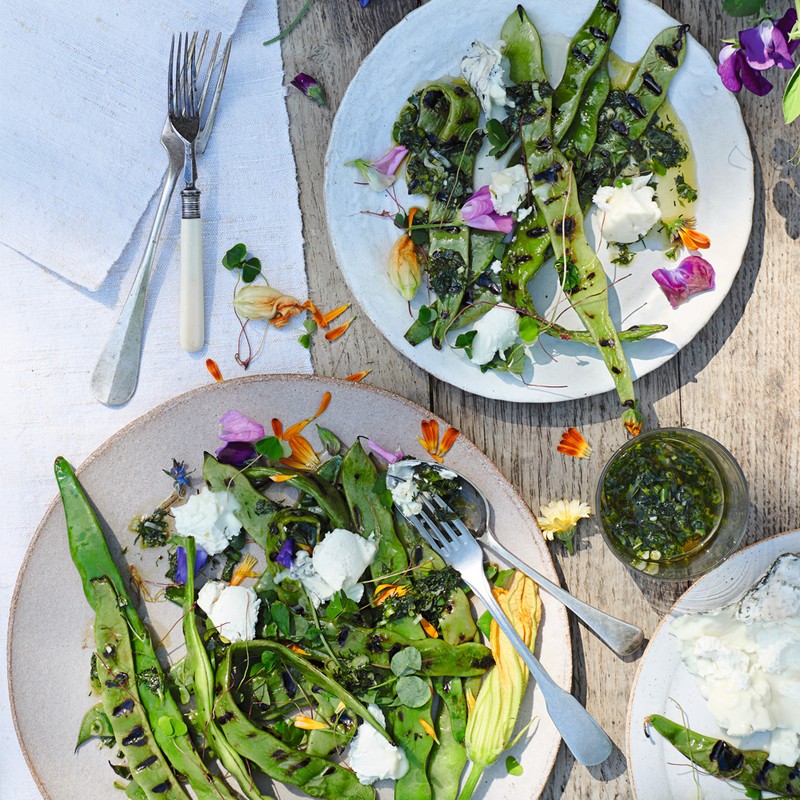
Griddled Helda Beans With Goats’ Cheese, Herbs & Flowers
Helda beans are like runner beans 2.0. They are flat and long like runners, but smooth-skinned and stringless – a runner bean after a facelift. They grow prolifically, reliably and untroubled by pests, but if you don’t grow your own, they are easy to get hold of in shops, often sold as flat beans or stringless beans. The griddling of the beans can be done on the grill of a BBQ over a medium-high direct heat or in a griddle pan. I almost always serve this dish at BBQs, scattering generous handfuls of herbs (and edible flowers if I can find them) on top with crusty bread alongside. It’s a blousy, relaxed dish that has lazy summer lunch written all over it.
Set a griddle pan over a high heat and leave it to get really hot or prepare your BBQ grill. Toss the beans in 2 tbsp of the olive oil. Place them in the hot griddle pan or on the BBQ and cook for 2-3 minutes, then turn them over and cook for the same amount of time on the other side, so they become branded with dark char lines on both sides. Depending on the size of your griddle or BBQ, you may need to do this in batches to achieve uniform charring. Once cooked, transfer to a heatproof mixing bowl.
In a bowl, whisk together the remaining olive oil and the honey, vinegar and spring onions, along with a pinch of salt. Tear the herbs and add them too. Mix, then check the balance of flavours and adjust as needed. Pour the dressing over the warm beans and muddle everything together gently.
Arrange the dressed beans on a serving platter. Daub pieces of goats’ cheese on top, shower over a confetti of petals to finish, if using, and serve.
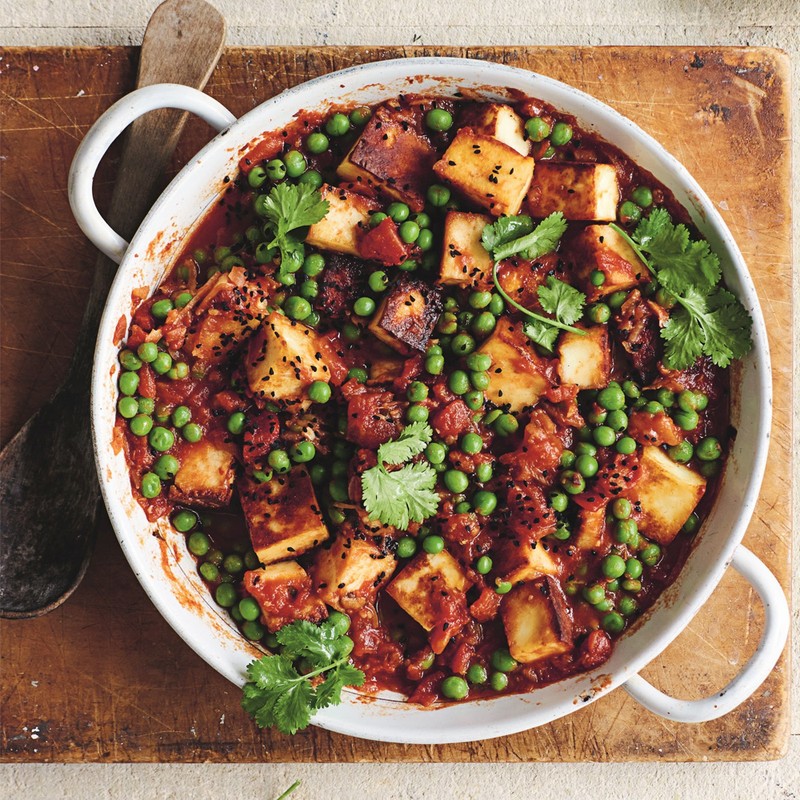
Pea & Paneer Curry
Don’t use fresh peas for this recipe. That might seem contrary to everything I stand for, but actually it isn’t. I say it to protect the peas. Fresh peas are delicate things and haven’t got anything like the required guts to stand up for themselves against loud flavours. Their soft, pure green tune would be lost in the cacophony of curry, so using them would be a waste of their talents. But frozen peas, which have a brash, robust sweetness, shout loudly enough to be heard on their own, so save their subtler siblings for a more intricate task, such as a pea and lemon risotto.
Heat 1 tbsp of the sunflower oil in a large non-stick saucepan over a medium-high heat. Fry the onion for 8-10 minutes, stirring regularly, until soft and blonde.
Reduce the heat a little, then add the garlic, ginger and chilli and cook gently for 3 minutes, then remove from the heat. Scoop the mixture into a small food processor and whizz to a paste.
In the same pan, fry the cumin and coriander seeds over a medium-high heat until their fragrance fills the kitchen, about 2-3 minutes. Tip into a pestle and mortar and crush to a coarse powder.
Return the powdered seeds to the pan, along with another tbsp of oil and the onion paste, ground cumin, ground coriander and curry leaves. Muddle them around the pan for a couple of minutes, then pour in the tomatoes and half a tomato tin of water. Bring to the boil and simmer for 15-20 minutes until thickened.
Meanwhile, take a non-stick frying pan and heat the remaining 2 tbsp of oil over a high heat. Add the paneer and fry for 1-2 minutes on each side until golden. Tip the paneer into the pan of tomato sauce, then stir in the peas, chutney or piccalilli, nigella seeds and a pinch of salt. Bubble for a final 3-4 minutes.
Tuck in at this point if you must, but I cannot stress how much this dish will improve if you leave it to cool, then refrigerate overnight: everything will become richer, silkier and even more delicious. To reheat, warm the curry over a low heat until it bubbles. Top with chopped coriander leaves and a sprinkling of nigella seeds, and serve with a dollop of natural yogurt and some rice or flatbreads.
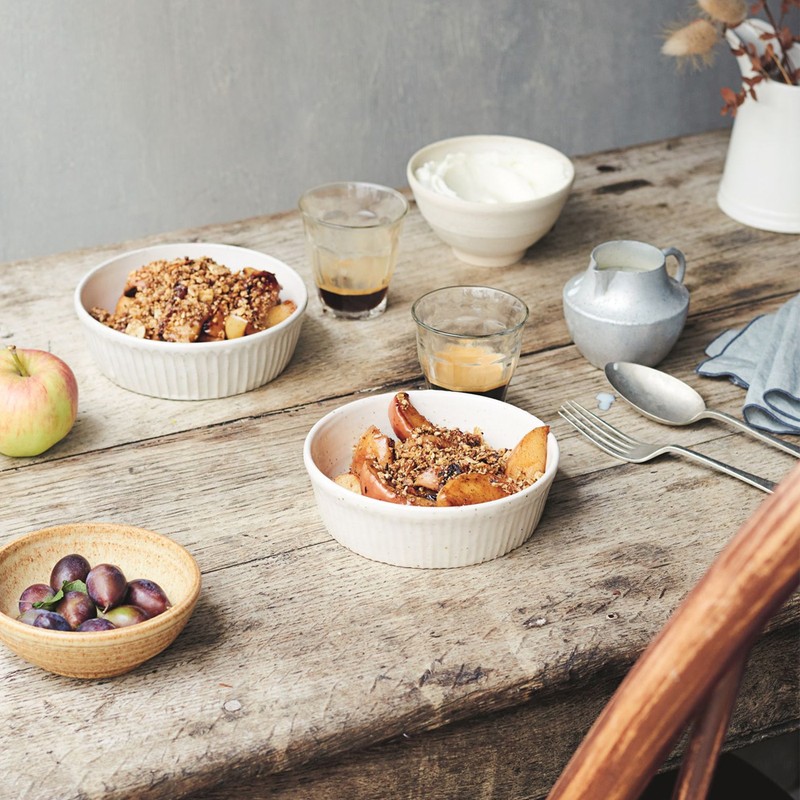
Stovetop Apple Breakfast Crumble
I don’t have an Aga, but if I did, this is what I would cook on it. It’s the kind of breakfast that brings to mind farmhouse kitchens, old, smelly Labradors and paisley tablecloths; the sort of world where someone bothers to actually cook breakfast rather than just shovelling down a bowl of cereal. It’s wholesome, homely, sustaining. A dish for making after a wet morning dog walk and for serving with ruddy cheeks and a pot of tea. Any (cooled) leftover granola crumble will keep in an airtight container at room temperature for a few days. And for a quick pudding, replace the yogurt below with cream, ice-cream or custard. In which case, a splash of calvados in the apple pan during the final minutes of cooking would be welcome – and so it might be at breakfast too, but probably best not!
Mix all the oats, oatmeal and linseed together in a bowl. Add the honey and half the butter and rub them into the oat mixture with your fingertips until the butter is evenly distributed. Stir in the flaked almonds, then set aside.
Core, but don’t peel, the apples and cut them into eighths. Melt the remaining butter in a frying pan over a medium-high heat and, when foaming, add the apple wedges and sauté for 8-10 minutes, turning occasionally, until golden brown. Scoop the apples into 2 serving bowls, leaving the juices behind in the pan.
Tip the crumble mixture into the buttery apple juices and cook over a medium-high heat for around 5 minutes (keeping the mixture moving so it doesn’t burn) until it is golden-brown and the butter and honey have melted to create sticky, caramel nuggets of crumble. Remove from the heat.
To serve, scatter some of the warm crumble over the sautéed apples and offer some yogurt on the side.
From The Veg Patch by Kathy Slack, available to buy now.
Visit Waterstones.com
DISCLAIMER: We endeavour to always credit the correct original source of every image we use. If you think a credit may be incorrect, please contact us at info@sheerluxe.com.
